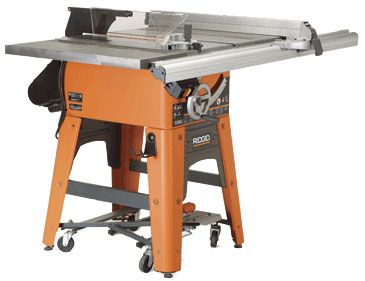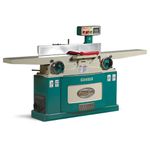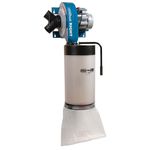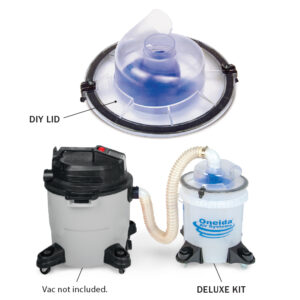Ridgid - Contractor Saw No. TS3650
This is a compact saw designed for the furniture maker. Features a one-piece trunnion assembly and adequate built-in dust collection.
Ridgid TS3650 Contractor’s Saw
The new Ridgid TS3650 contractor’s saw is a true furniture maker’s tool on par, in all but horsepower, with full-size cabinet saws. It looks like any other contractor’s saw, but many of the important details have been redesigned. The trunnion assembly is a one-piece iron casting that is much stiffer than the small castings and connecting rods of the older designs. The pivoting arm that supports the saw’s arbor also is a beefy casting, and it’s attached to the main casting in a way that eliminates any play between the two. In another improvement, the main casting wraps around the blade, allowing fairly effective sawdust collection through a built-in 2-1/2-in.-dia. port.
As on most contractor’s saws, the trunnions are mounted to the underside of the table, but this saw also has a simple cam and lever built into the rear trunnion. The cam makes it possible to align the blade parallel to the miter-gauge slot in just a few minutes. Both the 45° and 90° blade-tilt stops are adjustable from above the table with setscrews on both sides of the insert plate. The blade-tilt and height controls worked smoothly, and one nice feature—not seen even on much pricier saws—is a blade-angle lock on the front trunnion.
The standard, vibration-prone V-belt drive has been replaced on this saw with a flat, automotive-style poly V-belt running on machined steel pulleys, which reduces noise and vibration. The motor is a 1-1/2-hp, totally enclosed unit that should provide adequate power for most ripping operations.
The aluminum rip fence locks down at both ends, and it was sturdy, accurate, and slid smoothly on the rails. As shown above, the rails are set up for a rip capacity of 12 in. to the left of the blade and 36 in. to the right, but you can shift the rails farther right to expand the ripping capacity to more than 50 in. Out of the box, the fence was very close to parallel to the blade, but fine-tuning the alignment was a hunt-and-peck process.
Ridgid’s designers improved many other functions of the machine. The miter gauge uses screws for adjusting the 45° and 90° angle stops. The saw uses two wrenches for blade changing—no more nicked fingers. The base has a built-in retractable caster system that worked better than any I’ve ever seen. The power switch has a large paddle handle (easy to turn off), and the switch can be mounted anywhere in a T-slot along the front fence rail. The two cast-iron wings have large, open slots that make it easier to clamp accessory fences or featherboards to the tabletop.
Overall, the fit and finish of this saw were very good. The table flatness, runout, and initial alignment all tested out to be better than average. The machine had a nice, heavy feel to it because the steel used in the stand and base is thicker than that on many other contractor’s saws.
On the downside, the splitter and guard assemblies were awkward to set up and difficult to align with the blade. The standard insert plate and an accessory dado insert plate are sturdy metal castings, but the plastic zero-clearance throat plates are flimsy. The saw is sold at The Home Depot, and it is an impressive machine for the money.
—John White is Fine Woodworking’s shop manager.
More from FineWoodworking.com:
- Choosing a Tablesaw
- Tool Test: 9 Midsize Tablesaws
- Tool Test: 10-in. Cabinet Saws
- Tool Test: Cabinet Saws for the Home Shop
- Tool Test: Hybrid Tablesaws
Fine Woodworking Recommended Products

Veritas Precision Square

Grizzly G0495X Industrial Helical Cutterhead 8-in. Jointer

Rockler Dust Right 1250 CFM






















Log in or create an account to post a comment.
Sign up Log in